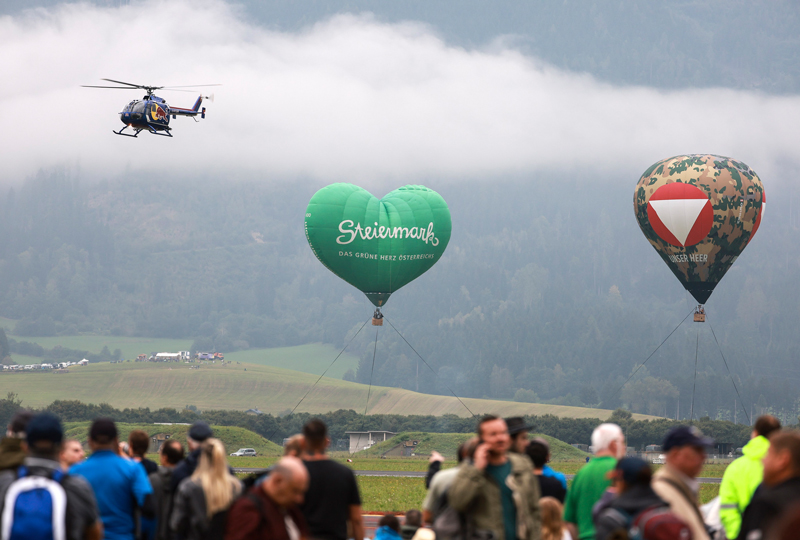
A helicopter for rough day-to-day business. This was the idea behind the approval of the Airbus Helicopters 350 B3+ Écureuil which is being built in Marignane near Marseille. But the Flying Bulls wouldn’t be themselves if they hadn’t given their new colleague something out of the ordinary: And so the squirrel’s (English for Écureuil) work outfit is certainly one of the most beautiful of its guild.
The fine lines on the skin of the light multi-purpose single-engine helicopter represent the topography around the Steinerne Meer. As aesthetically pleasing as its appearance may be, the AS 350’s future tasks will be equally demanding. The helicopter’s main area of use will be camera flights for in-house productions by ServusTV, a TV station owned by Red Bull, which have so far often been carried out by BO 105 helicopters. “My main concern was to lighten the load on these aircraft,” says Blacky Schwarz, the Flying Bulls’ chief helicopter pilot. “We own the only two helicopters certified for civil aerobatics in Europe, plus two in the USA. That’s why we need to handle them as gently as possible!”.
First introduced in 1974 – then by Aérospatiale, later by Eurocopter – the AS 350 was the first helicopter to be built on an assembly line. The then shareholder PSA, which owns the Peugeot and Citroen car brands among others, had the ambitious goal of producing a low-cost helicopter. Numerous car parts from large-scale production, such as dashboard switches or tailgate dampers, initially found their way into the AS 350. An attempt that did not prove practical. Other innovations, such as the Starflex rotor system made of glass fibre laminate, however, are still used almost unchanged today. This revolutionary rotor head requires only a quarter of the parts that would otherwise be needed, making it much easier to maintain and, of course, more cost-effective. Conversions, such as those necessitated by a change to a different camera system, can be carried out in no time at all, as all conceivable devices for all camera types already exist and time-consuming certifications are no longer necessary. The “little oak” is just as practical for everyday conversions: For dropping off parachutists, the rear seat – which, by the way, like the front seats, has been given an exceptionally beautiful cover in the Flying Bulls’ own saddlery – can be removed in just a few simple steps.
The pleasure of flying – as usual with the Flying Bulls – is of course not neglected. State-of-the-art systems such as Dual FADEC (Full Authority Digital Engine Control) or FLI (First Limit Indicator) make the pilot’s job much easier, whether it’s controlling the engines or sensitively handling the engine and external loads. “Every flight instructor’s dream,” Blacky Schwarz smiles.
Nearly 900 hp give the lightweight Écureuil a thrust almost equal to that of the Flying Bulls’ Bell Cobra TAH-1F. Not for nothing does the AS 350 hold the unofficial altitude record for helicopters. And it was also a B3+ that became the first helicopter ever to land on Mount Everest at 8848 metres. So if you ever discover the Airbus Helicopters AS 350 B3+ on one of the peaks of the Steinernes Meer, which are as high as 2655 meters, you will know that this helicopter, for all its elegance, has not even come close to exhausting its performance capabilities.
Aerospatiale AS 350 B3+ "Écureuil"
Technical Data: